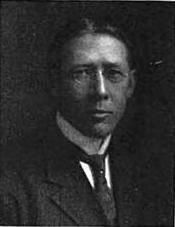 | ||
The Minnesota shift was an American football shift maneuver. It was the forerunner to all quick shifts in American football. The intent of the Minnesota shift was to keep the defense off balance and disguise the offense's intended point of attack. To be effective, the shift into the new formation was supposed to be done quickly and the ball snapped immediately afterward. University of Minnesota Golden Gophers coach Dr. Henry L. Williams is credited with its invention in the first decade of the 20th century, and his institution lends its name to the shift.
The maneuver gained national attention when it was adopted by period powerhouse Yale University in 1910. Williams, an 1891 graduate of Yale, had earlier repeatedly offered to mentor his alma mater in the formation, but was rebuffed because the Elis would "not [take] football lessons from a Western university." In 1910, the Elis suffered early season setbacks at the hands of inferior opponents, and sought an advantage to use in its game against strong Princeton and Harvard squads. Former Yale end Thomas L. Shevlin, who had served as an assistant coach at Minnesota, taught the team the shift. Yale used the Minnesota shift against both opponents, and beat Princeton, 5–3, and tied Harvard, 0–0.
In 1917, Wisconsin head coach John R. Richards claimed that Chicago's legendary Amos Alonzo Stagg, despite inventing the shift, had never been able to develop a counter to the Minnesota shift. In 1921, Ohio State employed a maneuver it called "guards over" that "checked the touted Minnesota shift more completely than any other Conference team has ever done," which forced the Gophers to resort unsuccessfully to the forward pass. The following season, Michigan also effectively shut down the shift behind good line play.
